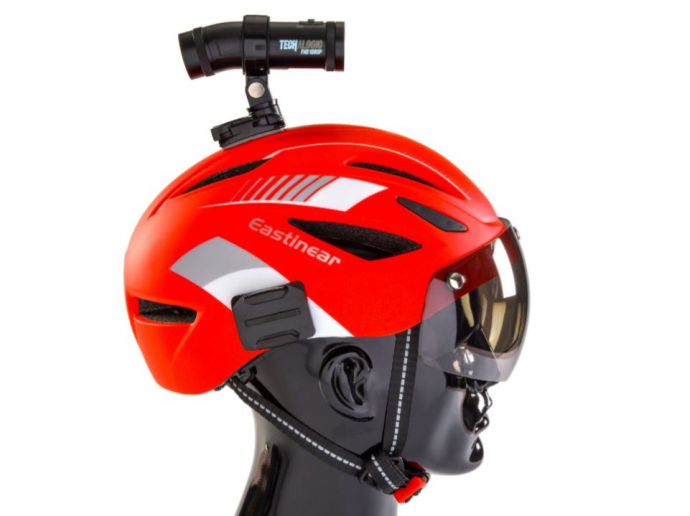
Running a cycle cam on your handlebars or helmet doesn’t make the roads feel any safer, but you do feel less helpless. In the event of a road traffic incident, video footage goes a long way towards guaranteeing legal redress – it’s a cycle insurance of sorts.
One of the great frustrations about cycling on British roads is the lack of infrastructure is compounded by an absence of justice for vulnerable road users. We are one of the only countries in Europe to eschew something known as strict liability – a common sense law that makes motorists automatically liable for injuries caused to pedestrians and cyclists.
The result for us is that court cases rest on one person’s word against another – and given that pedestrians and cyclists are often injured in road traffic collisions, their recollection of events can be affected. And when you consider that legislators, the judiciary and jurors comprise almost exclusively of drivers you begin to understand how the the cards are stacked against vulnerable road users.
How does the law regard cycle cam evidence?
Aside from the police portals designed specifically for the purpose, there is no reason why footage cannot be admitted as evidence like CCTV is used. It is likely that a witness statement would have to accompany the cycle camera footage and it would have to be downloaded to a CD with a certificate (countersigned by a solicitor) stating that it had not been altered in any way from its original digital format.
The Metropolitan Police is one of a number of forces that allows road users to upload camera footage when reporting a road traffic incident. The Met has already received well over 20,000 submissions and around two thirds lead to action being taken. Such systems are a game changer for cyclists. Evidence of close passes, abusive drivers and collisions can all be passed to the police with the click of a mouse. One imagines the thousands of drivers who have already received penalty points following an online submission of camera footage will become more considerate and careful road users as a result.
Techalogic DC-1 Front and rear-facing camera
We’ve been testing a the Techalogic DC-1 – a camera that shoots front and rear footage at the same time. So far we’re impressed. The camera is easy to pair with a smartphone and footage is easy to review, edit and download via the recommended Apps – we opted for Viidure. At £180, it’s a step up in price from the Akaso mentioned below, but we find it easier to use and the dual front and rear footage is indispensable. The image isn’t stabilised like the GoPros that cost twice the price, but more than adequate for submitting evidence. We haven’t had cause to contact Techalogic ourselves, but online reviews suggest that the British company is easy and pleasant to deal with.

Good value cycle cameras
There are a thousand and one different types of action camera on the market, but don’t make the mistake of thinking you need to spend a lot of money. The domination of the market by GoPro has inspired a host of Chinese competitors to follow suit. For example, the Akaso EK7000 is a 4K ultra high-definition action camera that shares more than a passing resemblance to a GoPro – even its various mounts are compatible. And while is doesn’t have a touch screen, it’s more than up to the job of recording the daily commute. Most importantly, it’s great value at less than £55 – a price that includes a case that’s waterproof to 30m and a bewildering array of mounts. The Akaso does a remarkably good job of capturing steady handlebar footage without the digital stabilisation offered by so many of its more expensive rivals.
The ethical choice
The ETA was established in 1990 as an ethical provider of green, reliable travel services. Over 30 years on, we continue to offer cycle insurance , breakdown cover and mobility scooter insurance while putting concern for the environment at the heart of all we do.
The Good Shopping Guide judges us to be the UK’s most ethical provider.
Steve K
Another great prize – yes please!
Peter G
Good to see
Frank
Could also double up as a storm shelter when caught by a downpour 😅
Julian C
Footage is great idea and in time I can see apps being able to calculate passing distances too. But I’m definitely not sold on the helmet mounted options. Whilst rare I believe it was this sort of set up which Michael Schumacher was using when he had his skiing accident suffering major brain damage when the camera punched through the helmet on impact. I could see an equal risk of this type of injury with these mounts particularly if the camera and mount are quite robustly made.